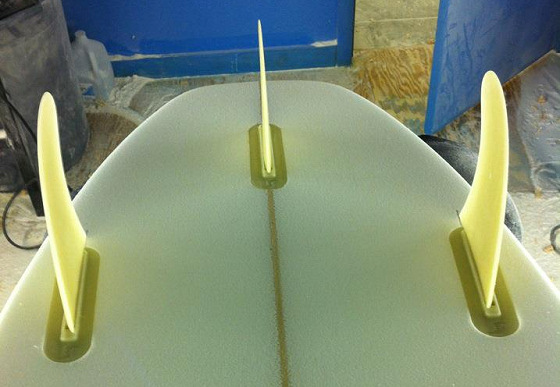Fifteen years ago, if you would have asked a surfer whether they preferred glass-on fins or removable fins, they probably would have responded with a quizzical look. This is because removable fin systems like FCS, Futures Fins, and Fin-S didn’t arrive on the surfboard fin design scene until the early 1990s. Since then, however, removable fin systems have become the standard surfboard fin option for both professional and recreational surfers. The increasing demand for more fin options has led to many big name and backyard shapers to ditch their old fin-crafting skills in favor of fin boxes from the industries top removable fin system manufacturers. Although it is becoming less and less common to see someone in the lineup with glassed-on fins, particularly on boards with three or more fins, there are still some surfers who swear by the performance of glass-ons over removable fins. Here we’ll examine some of the pros and cons of each fin option.
- Are often lighter than similarly finned boards using removable fin systems.
- Riders report that glass-ons provide a noticeable increase in performance, particularly smoother turns and less drag.
- With a stiffer base and more flex in the tip, glass-on fins generally have a very good flex response.
Cons
- Can be impractical, especially when traveling.
- Having glassed-on fins while surfing shallow reef breaks can cause session destroying anxiety.
- Breaking or blowing out a fin can mean serious damage to your surfboard, meaning you’ll be out of the water for a bit.
Pros
- Allow for testing and experimentation with different types of fines (e.g. sizes, construction materials, etc.)
- Ideal for traveling surfers, as fins can be removed before packing.
- Provide the possibility of having multiple boards in one. For example, a board with five removable fin boxes can be set-up as a thruster, quad, twin, or twinner.
- When advancements in fin design and technology come about, surfers using removable fin systems are able to try them out.
Cons
- When a fin breaks, it can sometimes take out the entire fin box with it, requiring some extensive repair work.
- Constantly switching fins in and out can make it difficult to dial-in any one set.
- Tend to be a little heavier and cause more drag than glass-on fins.

